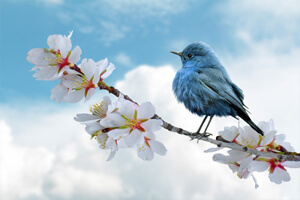Nature and Wildlife TV Narration: A Unique Challenge

Nature and wildlife is an especially captivating area. Think of iconic documentaries such as David Attenborough’s “Blue Planet.” These narrations do more than just describe; they create a storytelling experience that brings the wonders of nature to life. A narrator in this field must possess a unique blend of skills. Passion, compassion, and excellent diction are crucial. The ability to tell a compelling story is essential, as the narration must deeply connect with the audience, evoking a range of emotions from awe to empathy.
The power of nature and wildlife TV narration lies in its ability to educate and entertain simultaneously. Through a well-delivered narration, viewers are transported into the heart of the wild, experiencing the thrill of a predator’s hunt, the serenity of a forest, or the majestic flight of a bird. This genre of narration offers relaxation, excitement, comfort and adventure. The narrator’s voice becomes the bridge between the audience and the untamed world, making complex ecosystems and animal behaviours accessible and engaging.
The Voice Behind the Narration
Kate Marcin stands out in the voiceover industry, particularly in nature and wildlife TV narration. Her expertise and reputation make her a respected figure whose opinions and work are highly valued. Kate’s approach to narration is deeply rooted in her understanding of the subject matter and her ability to present complex information in a relatable manner. Her voice captures the essence of the natural world, drawing listeners into the story with a perfect blend of authority and warmth.
Creating a successful TV narration involves more than just reading a script. It requires an intimate connection with the material and genuine enthusiasm for the subject. Narrators must immerse themselves in the story, allowing their voices to reflect the beauty and drama of the natural world. This authenticity is what makes the narration believable and engaging. This creates a deeper connection between the documentary and its audience.
The Future of Nature and Wildlife TV Narration
As the demand for authentic and engaging content grows, the role of the narrator becomes even more critical. With audiences seeking genuine and immersive experiences, narrators like Kate Marcin continue to set a high standard for nature and wildlife TV narration. Their work not only educates but also inspires a greater appreciation for nature. The ability to balance educational content with captivating storytelling ensures that this genre remains a beloved and vital part of television programming.
To wrap this up, nature and wildlife TV narration is a vital aspect of documentary voice acting. It requires a unique set of skills and a deep passion for nature. Narrators like Kate Marcin bring these stories to life, making complex ecosystems and animal behaviours accessible and engaging for viewers. Their work not only entertains but also educates, creating a greater appreciation for the beauty and complexity of the world around us.
CONTACT KATE

